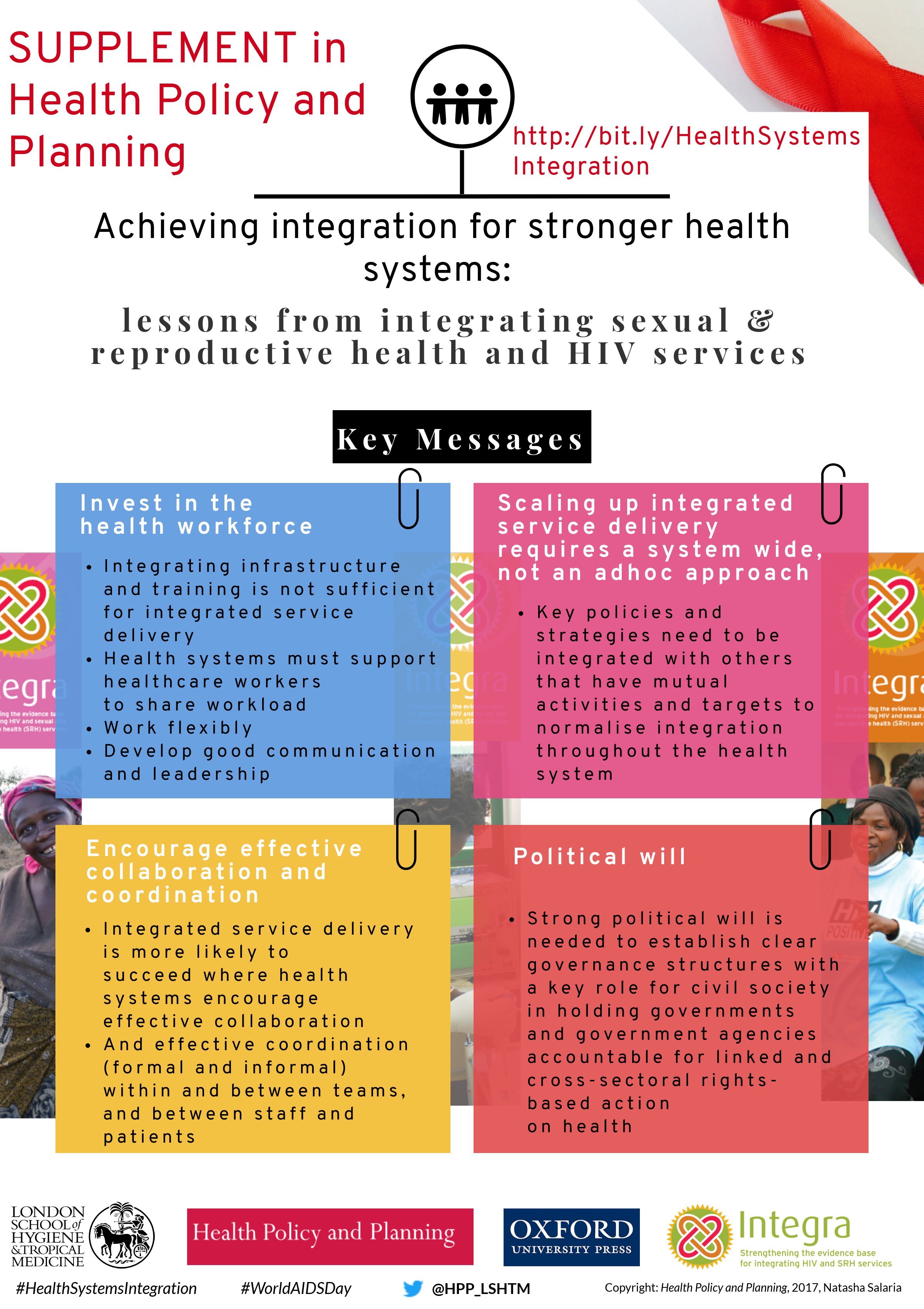By Susannah Mayhew (London School of Hygiene & Tropical Medicine)
There is a large body of robust scholarship on the impact and successful drivers of integrating sexual and reproductive health (SRH) and HIV services and their supporting health systems. This scholarship provides important lessons for understanding how to support the cross-sector linkages required if we are to make progress towards attaining the Sustainable Development Goals.
In November 2017 Health Policy and Planning published a Supplement on service and systems integration entitled ‘Integration for stronger health systems: lessons from integrating sexual and reproductive health and HIV services’.
This included some key results from the Integra Initiative, one of the world’s largest sexual and reproductive health (SRH) and HIV integration trials, as well as other integration initiatives and review papers. Collectively the Supplement synthesised evidence on the the nature and extent of the impact of integrated service delivery on key health behaviour and service outcomes and identified core drivers for successful integration. The Supplement’s Editorial and final Commentary paper reflect on the wider implications of findings and lessons learned from the SRH-HIV integration field in the context of the Sustainable Development Goals (SDGs). In particular, the Supplement papers ask:
- What can SRH-HIV integration findings tell us about if and how it is possible to build flexible, integrated systems and services that are resilient to changing SRH and wider health needs?
- What lessons can be learned from this body of scholarship that are important for integration of (any) services and systems in a multi-sector SDG context?
These bigger questions have taken on even greater importance in the past few months with increasing recognition of the need for health researchers and practitioners to engage across sectors, given at three major international conferences: the 22nd International AIDS Conference in July 2018, the Health Systems Global conference in October and the International Family Planning Conference in November 2018. At the AIDS conference, the Inter Agency Working Group on SRH-HIV Linkages (IAWG) co-convened by WHO and UNFPA, launched a Call to Action. In it, the IAWG calls for “innovative approaches” and “stronger multi-sectoral partnerships”. The Health Systems and Family Planning conferences both for the first time ever, had dedicated sessions on climate and environment which highlighted the need for innovative cross-sector partnerships for example with environmental and conservation groups.
Cross-sector linkages are challenging of course. Who designs, governs and funds joint (or linked) programmes? How do we design health systems that are able to successfully interact and engage with other sectors to advance health for all? The Integration Supplement papers provide a useful starting point. They find that the core drivers of successful integration include adaptive leadership and peer-teamwork that enabled facilities to provide integrated care, and achieve positive impact on health and service outcomes, even in the face of resource shortages or structural constraints. Successful integration also requires a systems approach – not a focus only on facility structures and resources, but also on the mechanisms for supporting and coordinating work across teams, programmes and sectors.
Strengthening health systems’ capacity to deliver health care for all in the SDG era is a shared aspiration. Success depends on how we reach beyond the health sector through creative partnerships to strengthen health systems’ reach and resilience. It is a challenge that integration scholars are well placed to take up.
